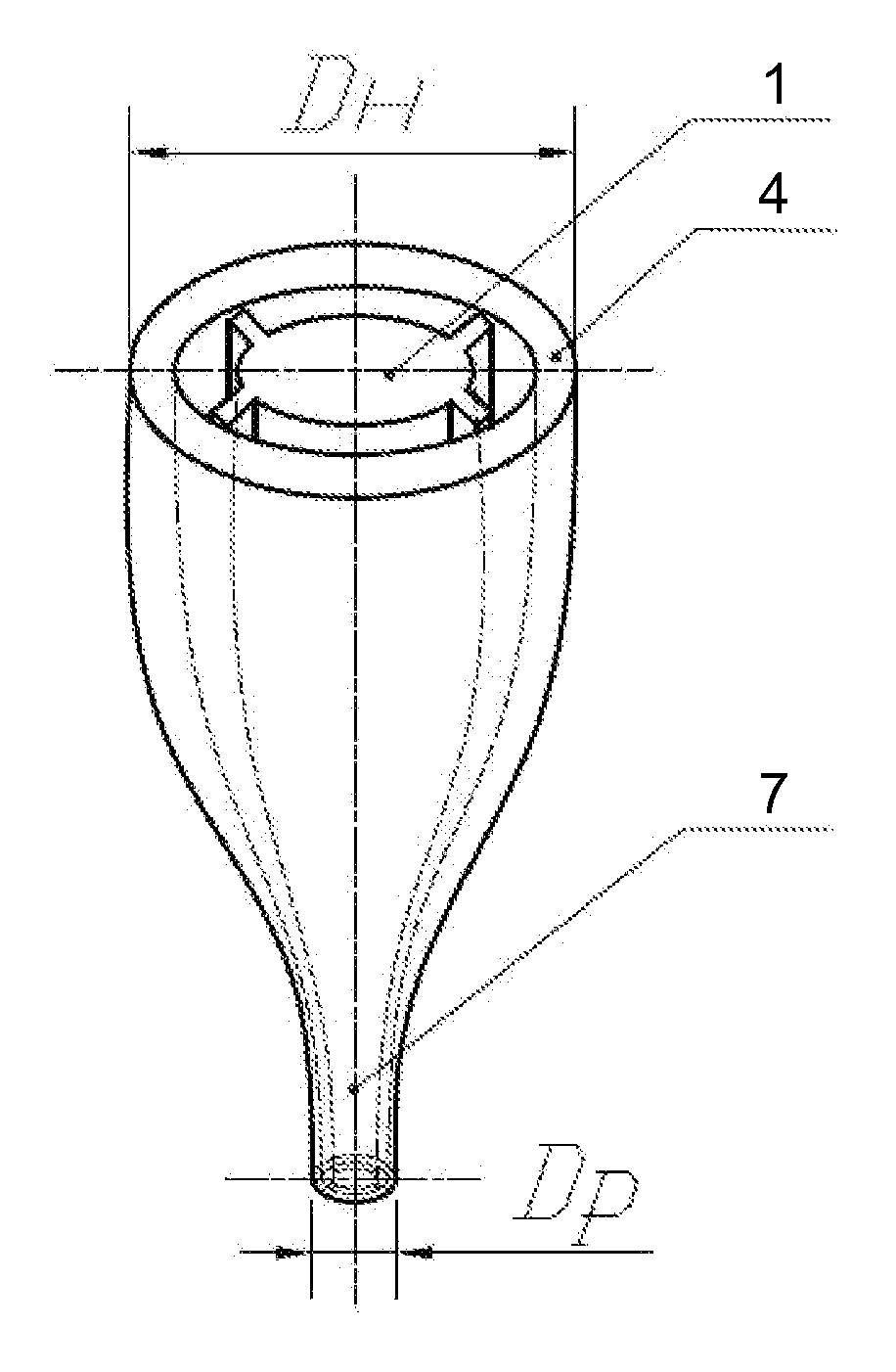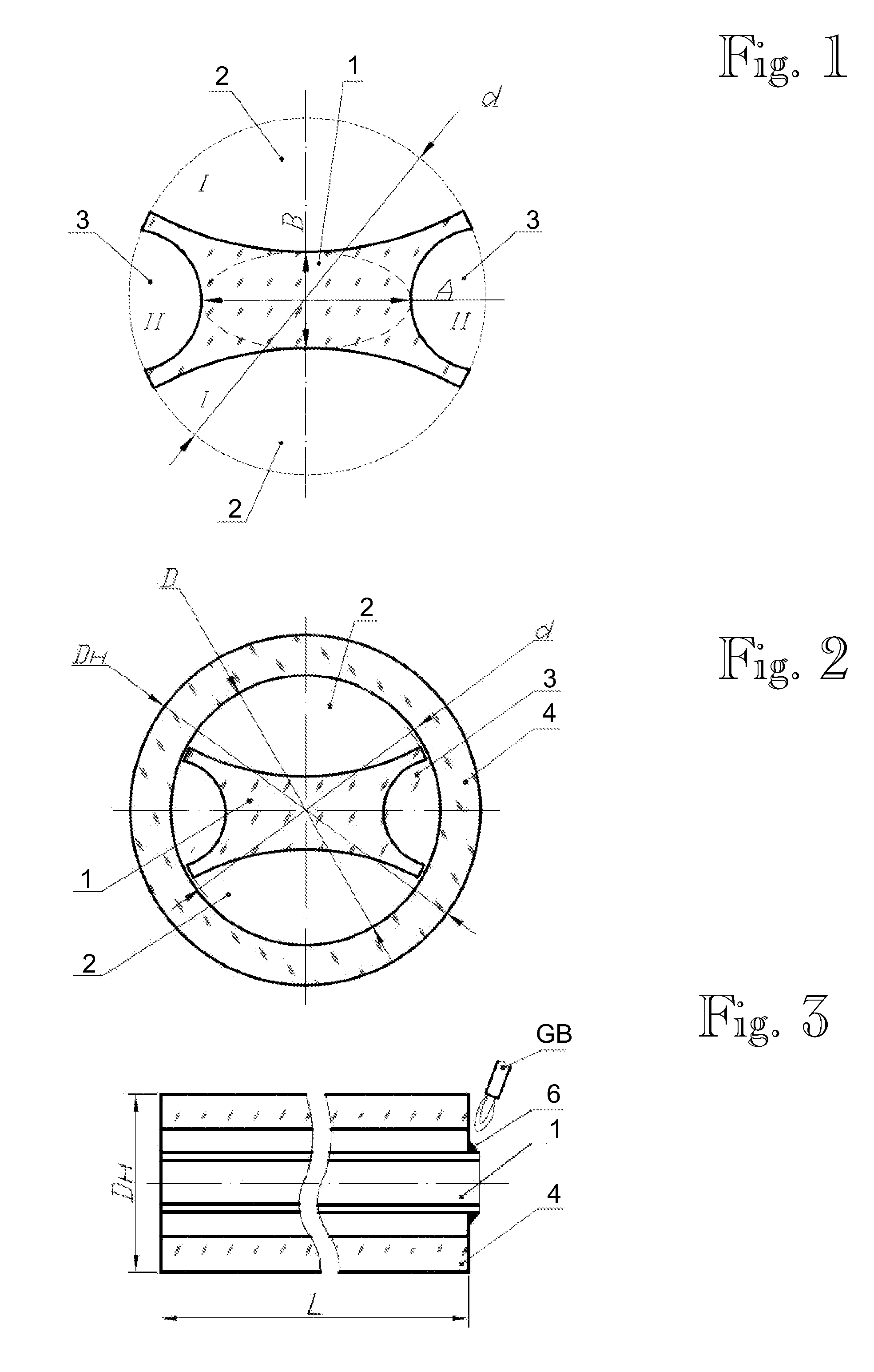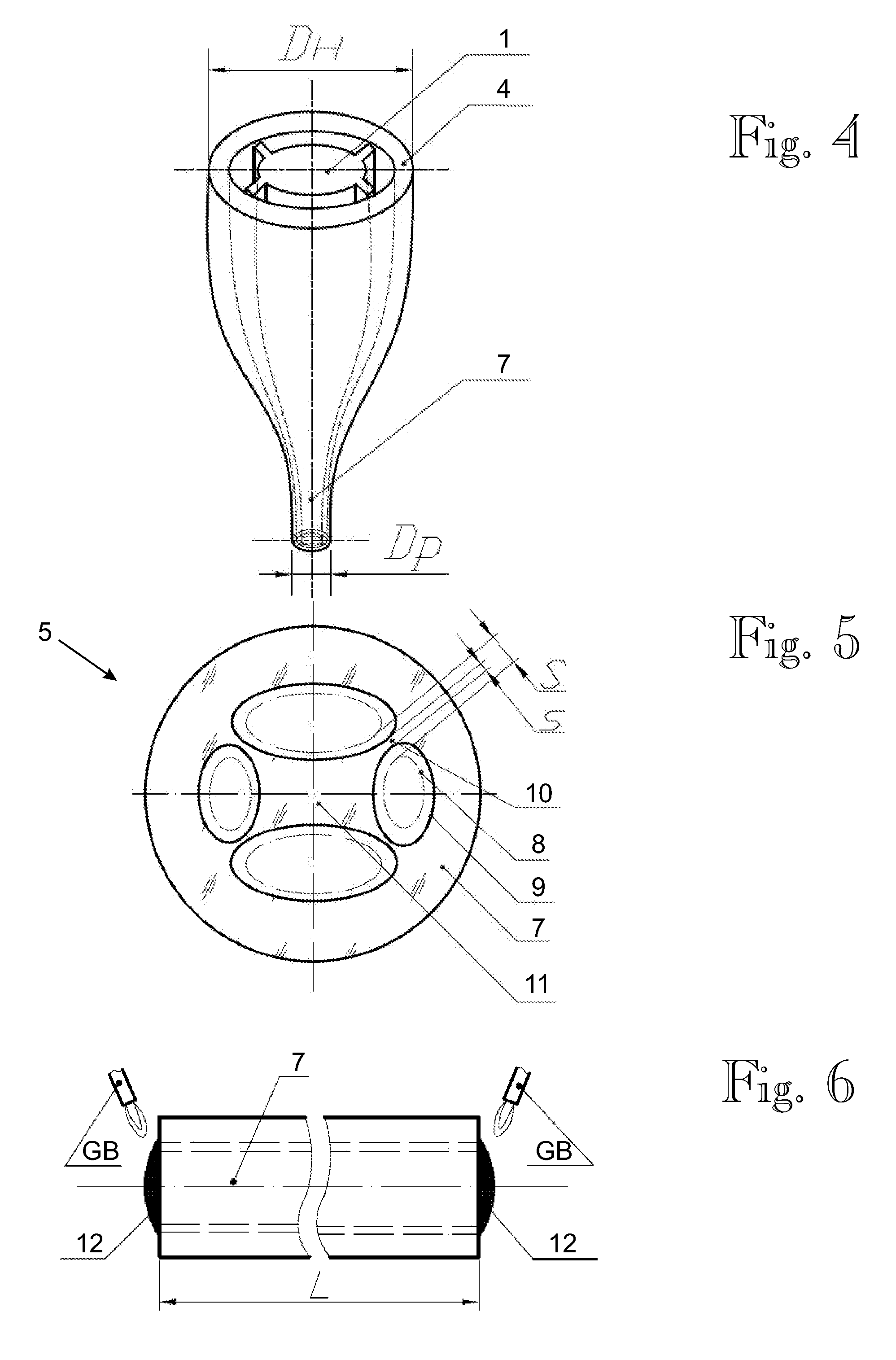Method for manufacturing a birefringent microstructured optical fiber
a microstructured optical fiber and manufacturing method technology, applied in the field of fiber optics, can solve the problem that the microstructure does not support the manufacture of birefringent optical fibers, and achieve the effect of increasing the diameter and mass of the preform
- Summary
- Abstract
- Description
- Claims
- Application Information
AI Technical Summary
Benefits of technology
Problems solved by technology
Method used
Image
Examples
first embodiment
[0055]Reference numerals are assigned as follows in FIGS. 1 through 8: 1—preform rod, 2—first pair of grooves I-I, 3—second pair of grooves II-II, 4—glass (quartz) tube, 5—preform, 6—fusion point, 7—pulled preform, 8—starting channel profile, 9—etched channel profile, 10—channel link struts, 11—preform core area, 12—sealed end of the preform, 13—capillary tube, 14—tubular holder, 15—fusion point of a preform segment 7 and capillary tube 13, 16—gap, 17—protective strengthening coating, 18—MOFSC core area, 19—fiber process matrix area.
[0056]Letter symbols assigned as follows in FIGS. 1 through 8: A—major axis of ellipse of the preform rod in the cross section, B—minor axis of ellipse of the preform rod in the cross section, d—preform rod diameter, D—inner diameter of quartz tube, DH—outer diameter of quartz tube 4, Dp—pulled preform diameter, Dk—outer diameter of quartz capillary tube, dk—inner diameter of quartz capillary tube, L—pre-preform segment length; S—non-etched channel link ...
second embodiment
[0067]FIG. 9 illustrates an embodiment of a manufacturing method for a MOFSC with a high linear birefringence, such as approximately 1*10−2. A starting cylinder-shaped rod 1 with diameter d=19 mm and length L=150-200 mm is made. Three pairs of grooves 2A, 2B and 3 are processed mirror-symmetrically relative to the plane passing through the longitudinal rotation axis of the preform, 5 mm deep semi-circular grooves 3 with a 2 mm radius at the top along one axis, and two pairs of trapezoidal grooves 2A, 2B with an inner base (closer to center) size of 3.5 mm and outer “base” being a partial circle with a length 8.75 mm, and as much as 6.5 mm in depth along the other axes. In this example an irregular groove shape will ensure that the core has the pre-designed size of 9 mm×6 mm and all the link struts 10 have the same thickness, such as 2 mm. The grooves 2A, 2B and 3 on the rod 1 are made, for instance, by grinding on a profile surface grinder with a longitudinal disc movement (relative...
third embodiment
[0069]The third embodiment relates to a method for manufacturing a birefringent microstructured fiber with a moderate ellipticity of the fiber core and a four-groove cladding structure. For example this method is suitable for manufacturing birefringent microstructured fibers with a fiber core whose minor axis is about 80% of the major axis.
[0070]The manufacturing steps of the third embodiment are substantially similar to those of the first embodiment, although the shape of the fiber core differs between the embodiments.
[0071]First, as shown in FIG. 12, a preform rod 1 is provided by grooves by grinding and polishing. The relative dimensions of the core portion of the preform rod determine the ellipticity of the resulting optical fiber. In this particular implementation, the following dimensions were used: d=20 mm, A=12.8 mm, B=10.8 mm, S=3.6 mm. Next, the preform rod is cleaned and dried. Then, as shown in FIG. 13, the preform rod is inserted into an appropriately-sized silica tube ...
PUM
| Property | Measurement | Unit |
|---|---|---|
| beating length | aaaaa | aaaaa |
| beating length | aaaaa | aaaaa |
| beating length | aaaaa | aaaaa |
Abstract
Description
Claims
Application Information
 Login to View More
Login to View More - R&D
- Intellectual Property
- Life Sciences
- Materials
- Tech Scout
- Unparalleled Data Quality
- Higher Quality Content
- 60% Fewer Hallucinations
Browse by: Latest US Patents, China's latest patents, Technical Efficacy Thesaurus, Application Domain, Technology Topic, Popular Technical Reports.
© 2025 PatSnap. All rights reserved.Legal|Privacy policy|Modern Slavery Act Transparency Statement|Sitemap|About US| Contact US: help@patsnap.com



